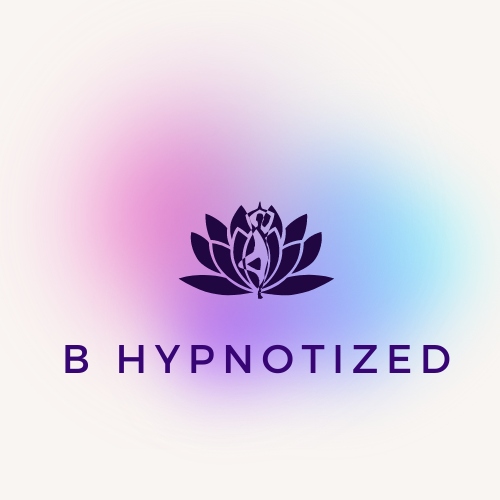5 Self-Help Tools That Will Help You Release Anxiety
According to the American Institute of Stress, about 90% of doctor visits are stress-related. That’s a very big percentage especially when it’s compared to the early 90s statistics (according to a study by Penn State). We have much better health care, the most advanced technology to date, and a lot more options to connect, yet we carry around a lot of stress. It seems like stress and anxiety are the new norms of the urban lifestyle.
We are exposed to stress daily one way or another through relationships, work, traffic, and so on. When daily stress and anxiety are postponed or shoved under the rug, negative emotions pile up and they may lead to a breakdown. If we know that stress and anxiety may lead to a physical detriment (and we do!), It Is our responsibility for ourselves to work on releasing stress and anxiety. It is actually a lot easier than you may think. When stress is released on a daily basis, anxiety and negative emotions are a lot easier to handle. Here are a few simple and easy tools that you can use at home that will help you release your stress and give you better management of anxiety:
1- Journaling
Journaling usually starts in early childhood but many people don’t follow through during their adult life. However, adulthood is the most important time to benefit from the powers of journaling.
During journaling, energy and emotional release takes place. It becomes easier to dissociate yourself from the problem and look at the problem from a different angle. According to the University of Rochester, journaling also helps to identify negative self-talk and negative behaviors.
Moreover, when journaling, we use a very powerful unconscious method to reach the subconscious mind: handwriting. Just by observing your handwriting, you can usually tell how anxious or frustrated you are. Handwriting means a lot more to professionals. Your handwriting can signal what is in the core of the problems and many more unconscious details that you weren’t aware of!
Daily practice is crucial for journaling in order to track your progress and really understand how your perspective and thinking changed over time. Start journaling before sleep since the brain waves are already slower.
2- Walking
Walking is a very powerful physical activity for both physical and mental wellness. According to Harvard Health, walking is proven to be beneficial for preventing cardiovascular events, diabetes, cholesterol, blood pressure, and obesity.
During walking, we also release happiness hormones such as Serotonin. Serotonin is the hormone that regulates mood. Simply by walking, you can stimulate your happiness.
Moreover, walking gives an opportunity to connect with nature and surroundings which is definitely not something very practiced during busy work life.
According to Harvard Health, walking is proven to be beneficial for preventing cardiovascular events, diabetes, cholesterol, blood pressure, and obesity.
3- Self-Hypnosis
Self-hypnosis is a self-help tool that focuses on calmness, relaxation, and imagination. During self-hypnosis, brain wave actions are very similar to the ones during meditation. Differently, during self-hypnosis, you can really focus on a targeted goal.
Another benefit of self-hypnosis is that it requires the organization of thoughts. Many people find self-hypnosis easier to keep the focus on than meditation since they are the ones who are responsible for creating the hypnotic state.
Self-hypnosis offers many opportunities. You can practice improving motivation, eating better, sleeping better, or even releasing negative emotions! The more you practice the better you become!
4- Breathing
Sounds simple? Not so fast! Many sources point out the fact that we are born as master breathers but in time, we forget to breathe! The only thing we have to do is breathe like a baby, as you already know how to!
Breathing has many benefits because a lack of quality oxygen affects the organs and the body significantly. During breathing, physical and mental release occurs in 4 phases: Focus shifts to the breath, the mind starts to calm, the body starts to calm, enough oxygen enters the body.
Nowadays, there are plenty of “right breathing” resources out there. There are even free classes and workshops on breathing collectively. Learn the right techniques for breathing and practice it daily.
Another benefit of breathing is that it activates the parasympathetic nervous system which creates physiological calmness. This is why you may encounter breathing in almost all wellness practices.
It is so simple; you can even start practicing right now as you are reading this!
5- Meditation
Meditation has been in our lives for the last 20 years. However, having a consistent meditation practice is challenging for many people.
Recent studies show that meditation is significantly helpful in stress reduction and anxiety management. Moreover, it can help you deal with the results of anxiety and stress better.
Meditation is fairly easy. There are multiple practices of meditation such as mindfulness meditation, guided meditation, breathing meditation, and so on. There is definitely one for everyone!
Start with a short practice such as 3 to 5 minutes. As you repeat your practice daily, you can increase the length every week. What matters is starting a meditation practice and getting in the habit of saving time for yourself.
Bottom Line
We all know that stress and anxiety are no fun. But we often underestimate that even unhealthy life choices can make us feel comfortable. Are you really ready to let go? Can you prioritize yourself? Are you one of those people who wants not to have anxiety but also doesn’t want to do anything about it? The bottom line is the moment you can prioritize yourself, you will realize how much potential for growth you actually have!

